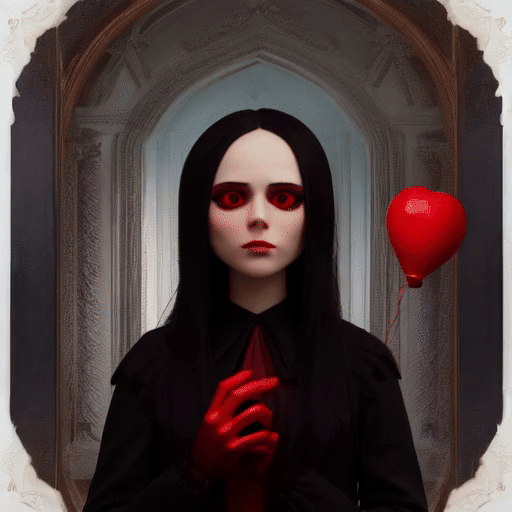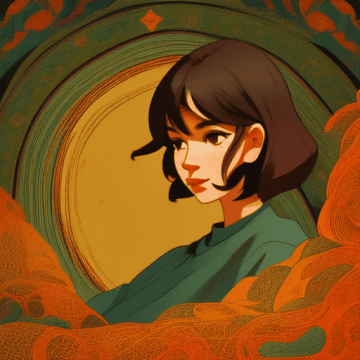animatediff-lightning-4-step
Maintainer: camenduru

33

| Property | Value |
|---|---|
| Run this model | Run on Replicate |
| API spec | View on Replicate |
| Github link | View on Github |
| Paper link | View on Arxiv |
Create account to get full access
Model overview
animatediff-lightning-4-step is an AI model developed by camenduru that performs cross-model diffusion distillation. This model is similar to other AI models like champ, which focuses on controllable and consistent human image animation, and kandinsky-2.2, a multilingual text-to-image latent diffusion model.
Model inputs and outputs
The animatediff-lightning-4-step model takes a text prompt as input and generates an image as output. The input prompt describes the desired image, and the model uses diffusion techniques to create the corresponding visual representation.
Inputs
- Prompt: A text description of the desired image.
- Guidance Scale: A numerical value that controls the strength of the guidance during the diffusion process.
Outputs
- Output Image: The generated image that corresponds to the provided prompt.
Capabilities
The animatediff-lightning-4-step model is capable of generating high-quality images from text prompts. It utilizes cross-model diffusion distillation techniques to produce visually appealing and diverse results.
What can I use it for?
The animatediff-lightning-4-step model can be used for a variety of creative and artistic projects, such as generating illustrations, concept art, or surreal imagery. The model's capabilities can be leveraged by individuals, artists, or companies looking to experiment with AI-generated visuals.
Things to try
With the animatediff-lightning-4-step model, you can explore the boundaries of text-to-image generation by providing diverse and imaginative prompts. Try experimenting with different styles, genres, or conceptual themes to see the range of outputs the model can produce.
This summary was produced with help from an AI and may contain inaccuracies - check out the links to read the original source documents!
Related Models

sdxl-lightning-4step

409.9K
sdxl-lightning-4step is a fast text-to-image model developed by ByteDance that can generate high-quality images in just 4 steps. It is similar to other fast diffusion models like AnimateDiff-Lightning and Instant-ID MultiControlNet, which also aim to speed up the image generation process. Unlike the original Stable Diffusion model, these fast models sacrifice some flexibility and control to achieve faster generation times. Model inputs and outputs The sdxl-lightning-4step model takes in a text prompt and various parameters to control the output image, such as the width, height, number of images, and guidance scale. The model can output up to 4 images at a time, with a recommended image size of 1024x1024 or 1280x1280 pixels. Inputs Prompt**: The text prompt describing the desired image Negative prompt**: A prompt that describes what the model should not generate Width**: The width of the output image Height**: The height of the output image Num outputs**: The number of images to generate (up to 4) Scheduler**: The algorithm used to sample the latent space Guidance scale**: The scale for classifier-free guidance, which controls the trade-off between fidelity to the prompt and sample diversity Num inference steps**: The number of denoising steps, with 4 recommended for best results Seed**: A random seed to control the output image Outputs Image(s)**: One or more images generated based on the input prompt and parameters Capabilities The sdxl-lightning-4step model is capable of generating a wide variety of images based on text prompts, from realistic scenes to imaginative and creative compositions. The model's 4-step generation process allows it to produce high-quality results quickly, making it suitable for applications that require fast image generation. What can I use it for? The sdxl-lightning-4step model could be useful for applications that need to generate images in real-time, such as video game asset generation, interactive storytelling, or augmented reality experiences. Businesses could also use the model to quickly generate product visualization, marketing imagery, or custom artwork based on client prompts. Creatives may find the model helpful for ideation, concept development, or rapid prototyping. Things to try One interesting thing to try with the sdxl-lightning-4step model is to experiment with the guidance scale parameter. By adjusting the guidance scale, you can control the balance between fidelity to the prompt and diversity of the output. Lower guidance scales may result in more unexpected and imaginative images, while higher scales will produce outputs that are closer to the specified prompt.
Updated Invalid Date
📉
AnimateDiff-Lightning

563
AnimateDiff-Lightning is a lightning-fast text-to-video generation model developed by ByteDance. It can generate videos more than ten times faster than the original AnimateDiff model. The model is distilled from the AnimateDiff SD1.5 v2 model, and the repository contains checkpoints for 1-step, 2-step, 4-step, and 8-step distilled models. The 2-step, 4-step, and 8-step models produce great generation quality, while the 1-step model is only provided for research purposes. Model inputs and outputs AnimateDiff-Lightning takes text prompts as input and generates corresponding videos as output. The model can be used with a variety of base models, including realistic and anime/cartoon styles, to produce high-quality animated videos. Inputs Text prompts for the desired video content Outputs Animated videos corresponding to the input text prompts Capabilities AnimateDiff-Lightning is capable of generating high-quality animated videos from text prompts. The model can produce realistic or stylized videos, depending on the base model used. It also supports additional features, such as using Motion LoRAs to enhance the motion in the generated videos. What can I use it for? AnimateDiff-Lightning can be used for a variety of applications, such as creating animated explainer videos, generating custom animated content for social media, or even producing animated short films. The model's ability to generate videos quickly and with high quality makes it a valuable tool for content creators and businesses looking to produce engaging visual content. Things to try When using AnimateDiff-Lightning, it's recommended to experiment with different base models and settings to find the best results for your specific use case. The model performs well with stylized base models, and using 3 inference steps on the 2-step model can produce great results. You can also explore the use of Motion LoRAs to enhance the motion in the generated videos.
Updated Invalid Date

animate-lcm

1
The animate-lcm model, developed by camenduru, is a cartoon-style 3D animation model. It is capable of generating cartoon-like 3D animations from text prompts. The model draws inspiration from similar 3D animation models like LGM, Champ, and AnimateDiff-Lightning, which also aim to create 3D animated content from text. Model inputs and outputs The animate-lcm model takes in a text prompt as input and generates a 3D animation as output. The input prompt can describe the desired scene, character, and animation style, and the model will attempt to create a corresponding 3D animation. Inputs Prompt**: A text description of the desired scene, character, and animation style. Width**: The width of the output image in pixels. Height**: The height of the output image in pixels. Video Length**: The length of the output animation in number of frames. Guidance Scale**: A parameter controlling the strength of the text prompt in guiding the animation generation. Negative Prompt**: A text description of elements to exclude from the output. Num Inference Steps**: The number of steps to use when generating the animation. Outputs Output**: A 3D animated video file generated based on the input prompt. Capabilities The animate-lcm model is capable of generating cartoon-style 3D animations from text prompts. It can create a wide variety of animated scenes and characters, from cute animals to fantastical creatures. The animations have a distinctive hand-drawn, sketchy aesthetic. What can I use it for? The animate-lcm model can be used to quickly generate 3D animated content for a variety of applications, such as short films, social media posts, or video game assets. Its ability to generate animations from text prompts makes it a powerful tool for content creators, animators, and designers who want to quickly explore and iterate on different animation ideas. Things to try One interesting aspect of the animate-lcm model is its ability to capture the essence of a prompt in a unique, stylized way. For example, you could try generating animations of the same prompt with different variations, such as changing the guidance scale or negative prompt, to see how the model interprets the prompt differently. You could also experiment with prompts that combine multiple elements, like "a cute rabbit playing in a field of flowers," to see how the model combines these elements into a cohesive animation.
Updated Invalid Date

animate-diff

46
animate-diff is a plug-and-play module developed by Yuwei Guo, Ceyuan Yang, and others that can turn most community text-to-image diffusion models into animation generators, without the need for additional training. It was presented as a spotlight paper at ICLR 2024. The model builds on previous work like Tune-a-Video and provides several versions that are compatible with Stable Diffusion V1.5 and Stable Diffusion XL. It can be used to animate personalized text-to-image models from the community, such as RealisticVision V5.1 and ToonYou Beta6. Model inputs and outputs animate-diff takes in a text prompt, a base text-to-image model, and various optional parameters to control the animation, such as the number of frames, resolution, camera motions, etc. It outputs an animated video that brings the prompt to life. Inputs Prompt**: The text description of the desired scene or object to animate Base model**: A pre-trained text-to-image diffusion model, such as Stable Diffusion V1.5 or Stable Diffusion XL, potentially with a personalized LoRA model Animation parameters**: Number of frames Resolution Guidance scale Camera movements (pan, zoom, tilt, roll) Outputs Animated video in MP4 or GIF format, with the desired scene or object moving and evolving over time Capabilities animate-diff can take any text-to-image model and turn it into an animation generator, without the need for additional training. This allows users to animate their own personalized models, like those trained with DreamBooth, and explore a wide range of creative possibilities. The model supports various camera movements, such as panning, zooming, tilting, and rolling, which can be controlled through MotionLoRA modules. This gives users fine-grained control over the animation and allows for more dynamic and engaging outputs. What can I use it for? animate-diff can be used for a variety of creative applications, such as: Animating personalized text-to-image models to bring your ideas to life Experimenting with different camera movements and visual styles Generating animated content for social media, videos, or illustrations Exploring the combination of text-to-image and text-to-video capabilities The model's flexibility and ease of use make it a powerful tool for artists, designers, and content creators who want to add dynamic animation to their work. Things to try One interesting aspect of animate-diff is its ability to animate personalized text-to-image models without additional training. Try experimenting with your own DreamBooth models or models from the community, and see how the animation process can enhance and transform your creations. Additionally, explore the different camera movement controls, such as panning, zooming, and rolling, to create more dynamic and cinematic animations. Combine these camera motions with different text prompts and base models to discover unique visual styles and storytelling possibilities.
Updated Invalid Date